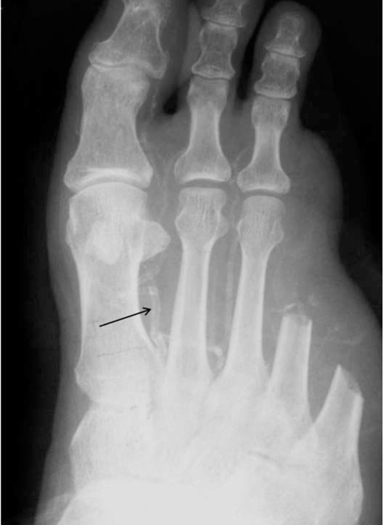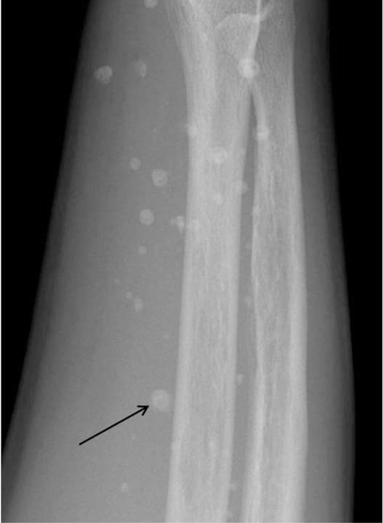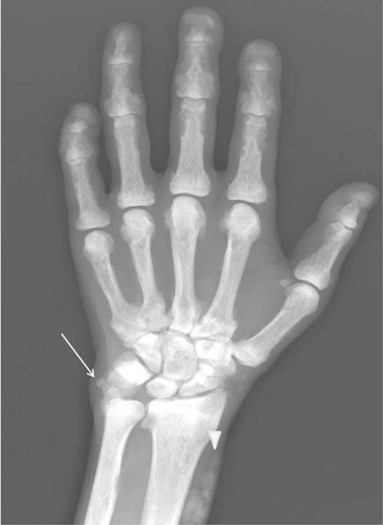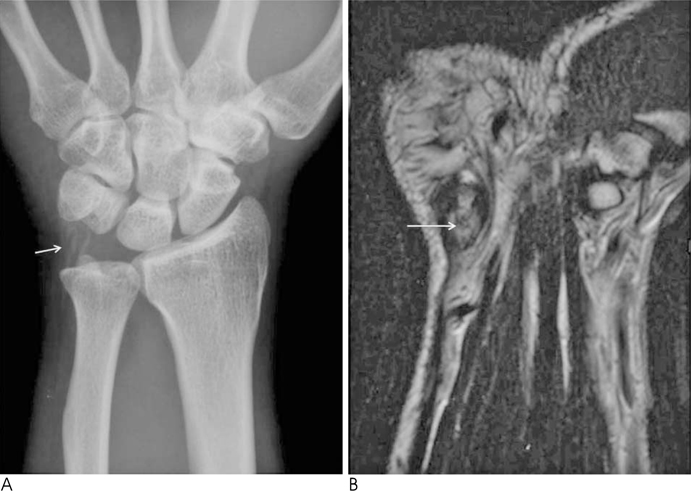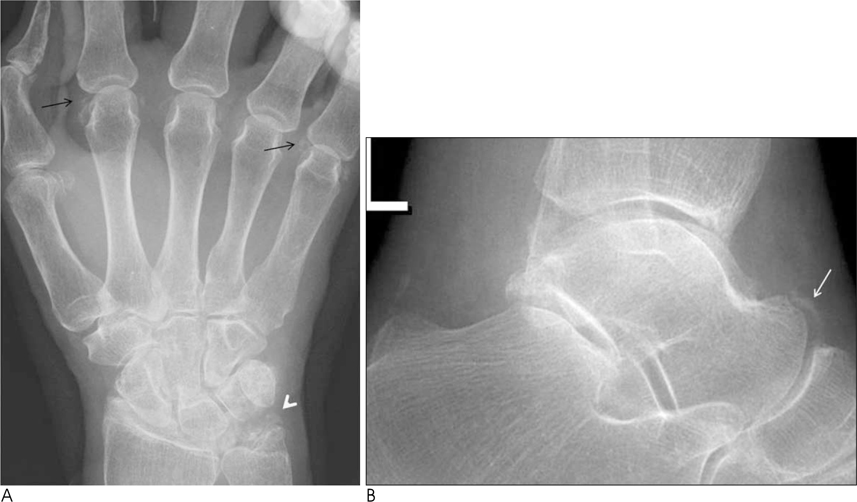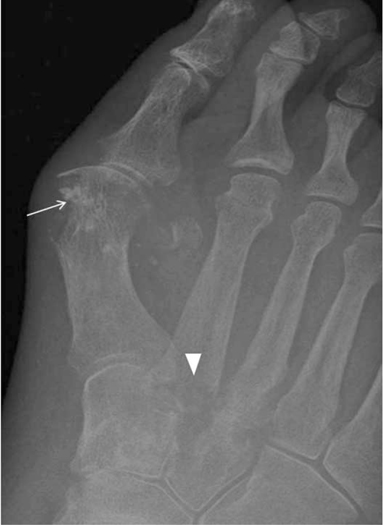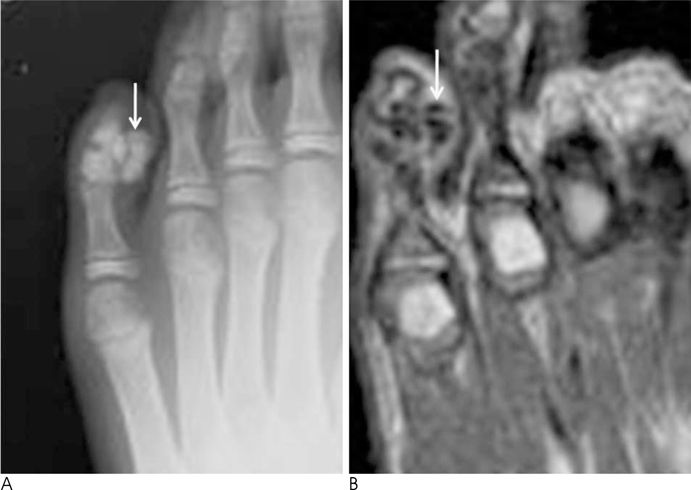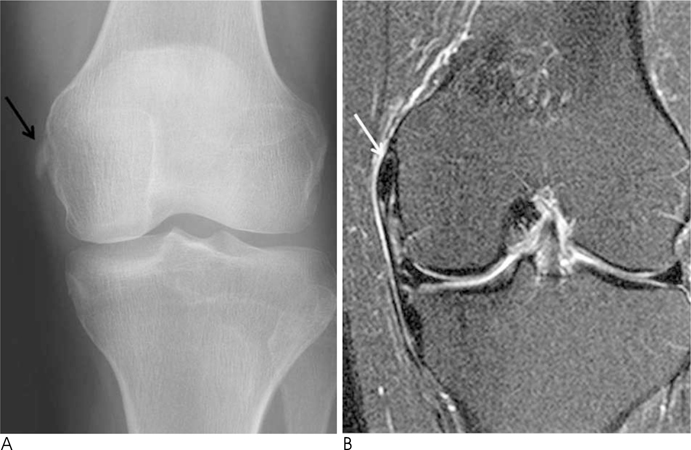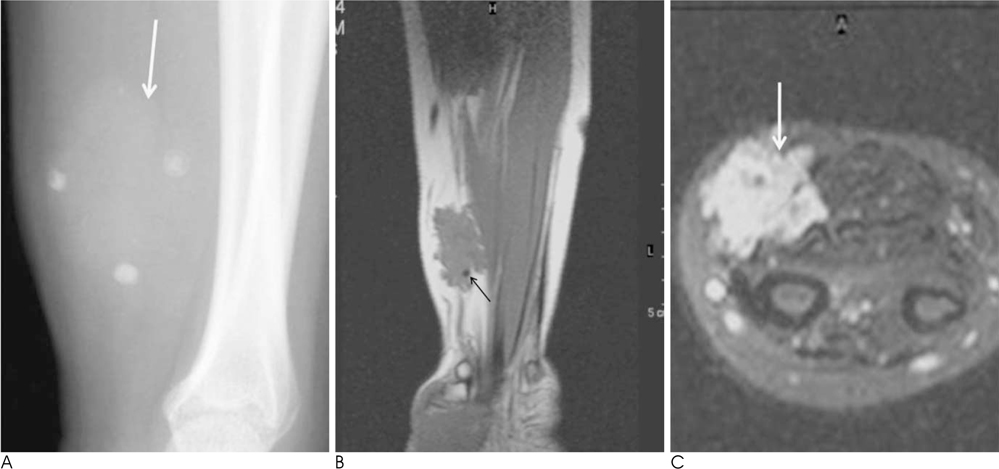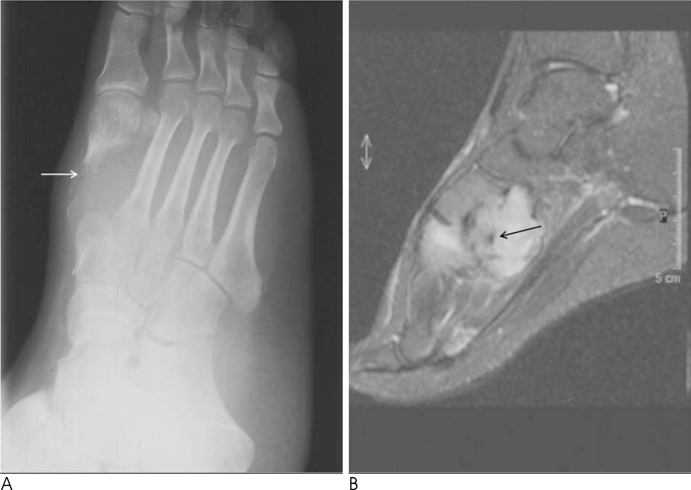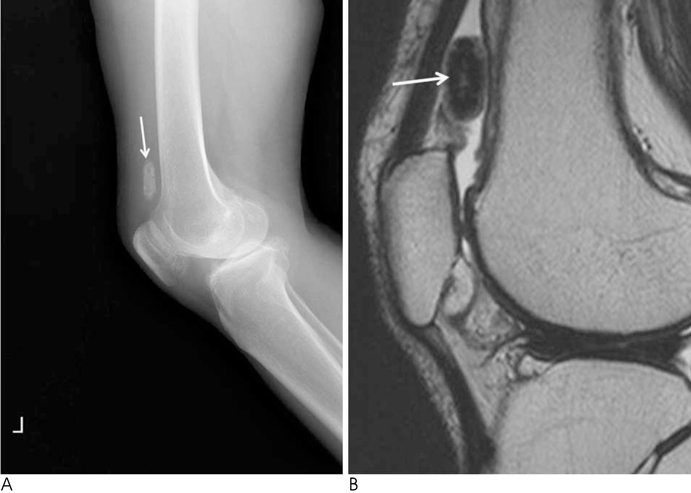J Korean Soc Radiol.
2010 Sep;63(3):275-285. 10.3348/jksr.2010.63.3.275.
Radiological Features of Soft Tissue Calcification: A Pictorial Essay
- Affiliations
-
- 1Department of Radiology, Daejeon St. Mary's Hospital, The Catholic University of Korea, Korea. yslee1074@catholic.ac.kr
- KMID: 2097906
- DOI: http://doi.org/10.3348/jksr.2010.63.3.275
Abstract
- Calcification of soft tissue may represent a nonspecific local response or be a manifestation of underlying disease. The diagnosis and principle of treatment varies depending on the characteristics of the calcified lesions. Soft tissue calcification is classified by mechanism into 3 types: metastatic calcifications, calcinosis, and dystrophic calcifications. However, classification according to the site and shape of calcification may be more helpful for a clinical diagnosis. The purpose of this pictorial essay is to classify soft tissue calcifications according to their location: vessel, periarticular, joint capsule, tendon, bursa, cartilage, ligament, and in tumors, as well as to document the characteristic radiological findings and causes of calcifications.
MeSH Terms
Figure
Reference
-
1. Gartner L, Pearce CJ, Saifuddin A. The role of the plain radiograph in the characterisation of soft tissue tumours. Skeletal Radiol. 2009; 38:549–558.2. Resnick D. Diagnosis of bone and joint disorders. 4th ed. Philadelphia: Saunders;2002. p. 4635–4665.3. Hussmann J, Russell RC, Kucan JO, Khardori R, Steinau HU. Soft tissue calcifications: differential diagnosis and therapeutic approaches. Ann Plast Sur. 1995; 34:138–147.4. Boulman N, Slobodin G, Rozenbaum M, Rosner I. Calcinosis in rheumatic disease. Semin Arthritis Rheum. 2005; 34:805–812.5. Jevtic V. Imaging of renal osteodystrophy. Eur J Radiol. 2003; 46:85–95.6. Jung CB, Gentili A, Chew FS. Calcific tendinosis and periarthritis. Classic magnetic resonance imaging appearance and associated findings. J Comput Assit Tomogr. 2004; 28:390–396.7. Saffar P. Chondrocalcinosis of the wrist. J Hand Surg Br. 2004; 29:486–493.8. Resnick D. Calcium Pyrophosphate Dihydrate Crystal Deposition Disease. In : Resnick D, editor. Diagnosis of bone and joint disorders. 4th ed. Philadelphia: Saunders;2002. p. 1564–1565.9. Smack D, Norton SA, Fitzpatrick JE. Proposal for a pathogenesis-based classification of tumoral calcinosis. Int J Dermatol. 1996; 36:265–271.10. Kransdorf MJ, Murphey MD. Imaging of soft tissue tumors. Philadelphia: W.B. Saunders Co.;1997. p. 103–118.11. Kransdorf MJ, Murphey MD. Imaging of soft tissue tumors. 2nd ed. Philadelphia: Lippincott Williams & Wilkins;2006. p. 80–149.12. Kind M, Stock N, Coindre JM. Histology and imaging of soft tissue sarcomas. Eur J Radiol. 2009; 72:6–15.13. Kransdorf MJ, Murphey MD. Imaging of soft tissue tumors. 2nd ed. Philadelphia: Lippincott Williams & Wilkins;2006. p. 457–460.
- Full Text Links
- Actions
-
Cited
- CITED
-
- Close
- Share
- Similar articles
-
- Imaging Features of Soft-Tissue Calcifications and Related Diseases: A Systematic Approach
- Imaging Features of the Mesenchymal Tumors of the Breast according to WHO Classification: A Pictorial Essay
- Unusual, but important, peri- and extra-articular manifestations of rheumatoid arthritis: a pictorial essay
- Breast lesions during pregnancy and lactation: a pictorial essay
- Multi-Detector CT Findings of Typical and Atypical Appendicitis: A Pictorial Essay

